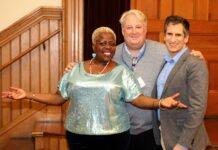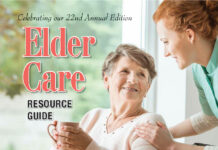By Judith Boyko
A recent New York Times article reported on the benefits of group exercise for caregivers. It alleviates feelings of loneliness and isolation and can improve the health of the caregiver at the same time.
But exercise delivers myriad benefits for older adults, too — regardless of whether or not they are caregivers. Studies have shown that older adults who exercise can improve and maintain physical and mental health; improve mood and manage stress; and prevent or delay disease. Other health benefits include controlled blood pressure; lower cholesterol; osteoporosis prevention; improved balance and more.
 In its report, Physical Activity and Health, the Centers for Disease Control and Prevention (CDC) indicates that to achieve health benefits, exercise does not have to be strenuous. Even a moderate amount of daily exercise will improve one’s overall health.
In its report, Physical Activity and Health, the Centers for Disease Control and Prevention (CDC) indicates that to achieve health benefits, exercise does not have to be strenuous. Even a moderate amount of daily exercise will improve one’s overall health.
There are enough low-impact exercises that older adults can incorporate into their daily routine, including walking, running, stretching, cycling, swimming and even weight training.
Of course, if exercise is not already a part of your routine, talk with your doctor to make sure that none of your existing medical conditions would prohibit you from embarking on a more active lifestyle. Once you’re cleared to move, start slowly.
The National Institute of Health recommends four types of exercise for adults over the age of 65: endurance, strength, balance and flexibility. All of these can be done in a group setting, which can help to motivate you as well as provide a sense of community:
•Endurance — Exercises that improve endurance include tennis, biking, jogging, aerobics and yard work, to name a few. Lifting weights and Pilates are some other ways for older adults to improve their strength.
•Balance — According to the CDC, 33 percent of those over the age of 65 fall and sustain injury each year. Some of the falls even increase the risk of early death.
Balance exercises, which are important because improved balance reduces the risk of falls, can include sitting knee extensions, seating marching and Tai Chi.
To test your own balance, visit www.moveforwardpt.com and search “test your balance.”
•Flexibility — As we age, the flexibility of our joints declines, our muscles lose elasticity, and the range of movement throughout our bodies decreases. Stretching can serve as a relaxation technique; it can strengthen muscles so that everyday tasks are not increasingly difficult to conduct; and it can help to maintain proper posture. Stretching can help with coordination and balance, thereby preventing injuries that may lead to mobility loss.
Start with a conversation. Discuss with your personal physician your interest in exercising and the benefits you want to achieve. Your doctor can recommend an appropriate schedule for you based on your age, health and medical status.
Judith Boyko, MBA, MS, RN, is CEO of Century Health Systems, Distinguished Care Options and Natick Visiting Nurse Association. She can be reached at info@natickvna.org. For additional information, visit www.centuryhealth.org, www.dco-ma.com or www.natickvna.org or call (508) 651-1786. Archives of articles from previous issues can be read at www.fiftyplusadvocate.com.












